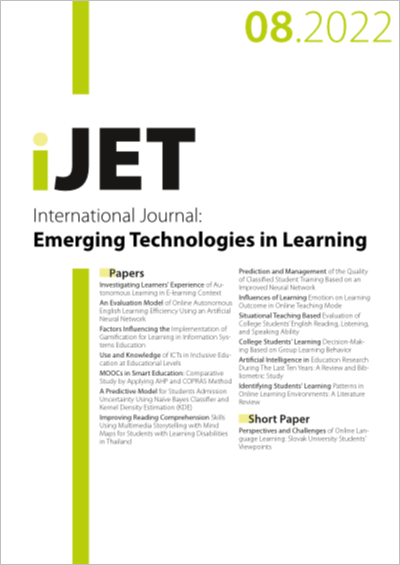Identifying Students' Learning Patterns in Online Learning Environments: A Literature Review
DOI:
https://doi.org/10.3991/ijet.v17i08.29811Keywords:
Digital learning,educational data, engagement, behaviours, struggling students, persistence.Abstract
Digital learning environments have offered new opportunities to stream educational materials such as courses, educational videos, forums and provide outcomes of the students, grades, engagement details, and learning patterns. These valuable educational data has emerged with the latest technologies and software tools to provide researchers and decision-makers with a better understanding of students' behaviours. These virtual learning environments can professionally aid struggling students by observing, learning, and identifying different learning patterns. Many researchers have discussed that even if there are instructions and helping tools within these environments, some students remain at risk of negative learning behaviours such as boredom, disengagement, and failure. Particularly when approaching complex or new educational content. Previous researchers have observed that the students exhibit high persistence levels when spending too much time on a particular task when they are learning remotely or too many tries to solve a specific task without reaching the success level. Students' persistence is identified as a prominent learning skill contributing to confirmed success while learning new education materials. Many works of literature recognised the value of persistence. They reached a fundamental fact that not all persistence is considered productive, especially when spending more time and effort without moving toward a state of mastery in learning new skills and topics. This scenario may eventually lead to frustration and disengagement; in the worst-case scenarios, the students will finally drop the course or just quit learning. By examining the most relevant literature, this paper discusses the main factors affecting students' digital learning persistence. Different models performed at each learning opportunity are observed to categorise when involvements may be arranged to best aid the learners facing learning struggles.
Downloads
Published
How to Cite
Issue
Section
License
Copyright (c) 2022 Maryam Ali

This work is licensed under a Creative Commons Attribution 4.0 International License.


